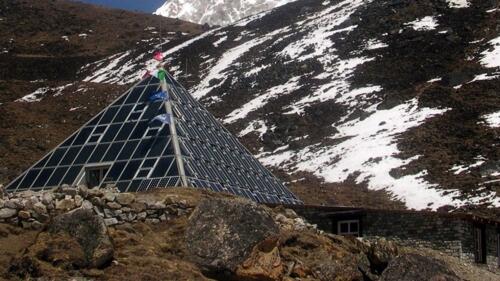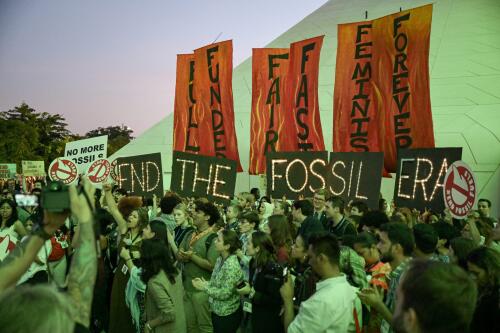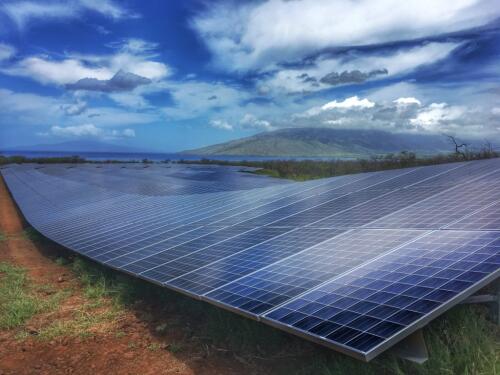news
Research reveals that oceans store 20% more carbon dioxide than previously estimated, primarily through plankton transporting carbon to the seabed. This new understanding, however, doesn’t significantly impact the current CO2 emission crisis. The ocean’s capacity to store atmospheric carbon dioxide is some 20% greater than the estimates contained in the latest IPCC report.[1] These are the findings of a study that was published in the journal Nature on December 6, 2023, led by an international team including a biologist from the CNRS.[2] The scientists looked at the role played by plankton in the natural transport of carbon from surface waters down to the seabed. Plankton gobble up carbon dioxide and, as they grow, convert it into organic tissue via photosynthesis. When they die, part of the plankton is transformed into particles known as ‘marine snow’. Being denser than seawater, these particles sink dow...
What happens to bee populations in areas of massive human population growth like Wake County, North Carolina, where the population is more than 16 times greater than it was at the turn of the 20th century? Examining historical museum specimens along with online bee repositories and university bee collections, researchers at North Carolina State University show that bee species richness – the number of different bee species – has varied over the past 118 years, with no clear downward trend emerging over time, said Selina Ruzi, a postdoctoral researcher in biological sciences at NC State and corresponding author of a paper describing the research. With that good news, though, comes some not-so-great news. The study showed that, of 328 bee species collected in Wake County over the study period (1900-2018), 195 species have not been collected since 1969; many of these missing species are bees that nest underground. “Our hypothesis was th...
Glaciers in the Himalayas are melting rapidly, but a new report showed an astonishing phenomenon in the world’s tallest mountain range could be helping to slow the effects of the global climate crisis. When warming temperatures hit certain high-altitude ice masses, it sets off a surprising reaction that blows robust cold winds down the slopes, according to the study published December 4 in the journal Nature Geoscience. The warming climate creates a greater temperature gap between the surrounding air above Himalayan glaciers and the cooler air directly in contact with the ice masses’ surface, explained Francesca Pellicciotti, professor of glaciology at the Institute of Science and Technology Austria and lead author of the study. “This leads to an increase in turbulent heat exchange at the glacier’s surface and stronger cooling of the surface air mass,” she said in a news release. As the cool, dry surface air gets coole...
Dubai, United Arab Emirates—”The North Star of the COP28 Presidency is to keep 1.5°C within reach,” has been the frequent refrain of Sultan Ahmed Al Jaber, the COP28 president overseeing the current U.N. climate change negotiations in Dubai. Al Jaber is reflecting the oft-chanted activist slogan “Keep 1.5 Alive!” The idea is that humanity must reduce its emissions of globe-warming greenhouse gases from burning fossil fuels sufficiently to keep the planet from warming more than 1.5 degrees Celsius above the pre-industrial baseline (1850-1900). It is worth tracing the history of where the 1.5 C “North Star” originated and what the consequences of breaching it would likely be. The 1.5 C threshold was officially enshrined as a goal under the United Nations Framework Convention on Climate Change with the adoption of the Paris Climate Change Agreement in 2015. Article 2 in the Paris Agreement commits s...
Hawaiian Electric will begin contract negotiations with developers of four renewable energy projects on Maui, that the company says “will further reduce Hawaii’s dependence of imported oil for power generation.” In total, Hawaiian Electric will begin negotiations with developers of 15 renewable projects, with seven on Oahu and four on Hawaii island, the company said earlier this month. Estimated completion dates for the projects on the three islands range from 2026 to 2033. On Maui, discussed will be three solar-plus-storage projects and one wind project totaling approximately 324 GWh of variable generation and 320 MWh of storage. The announcement of new contract negotiations comes as last month Hawaiian Electric and developer Innergex Renewable Energy announced the termination of an agreement for a planned grid-scale solar and battery storage project in South Maui which was hit with lengthy delays from the developer’s legal ch...




